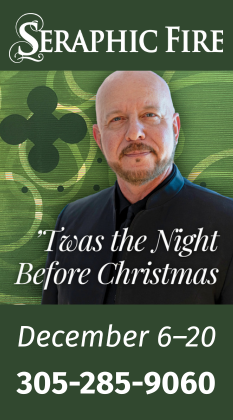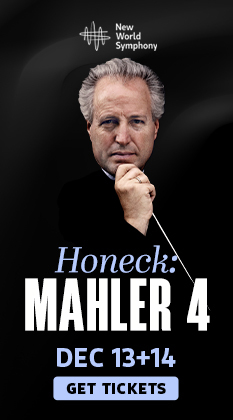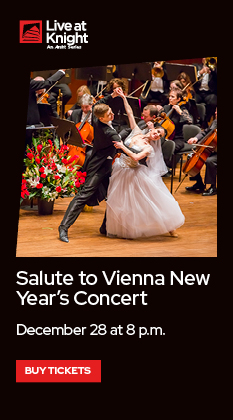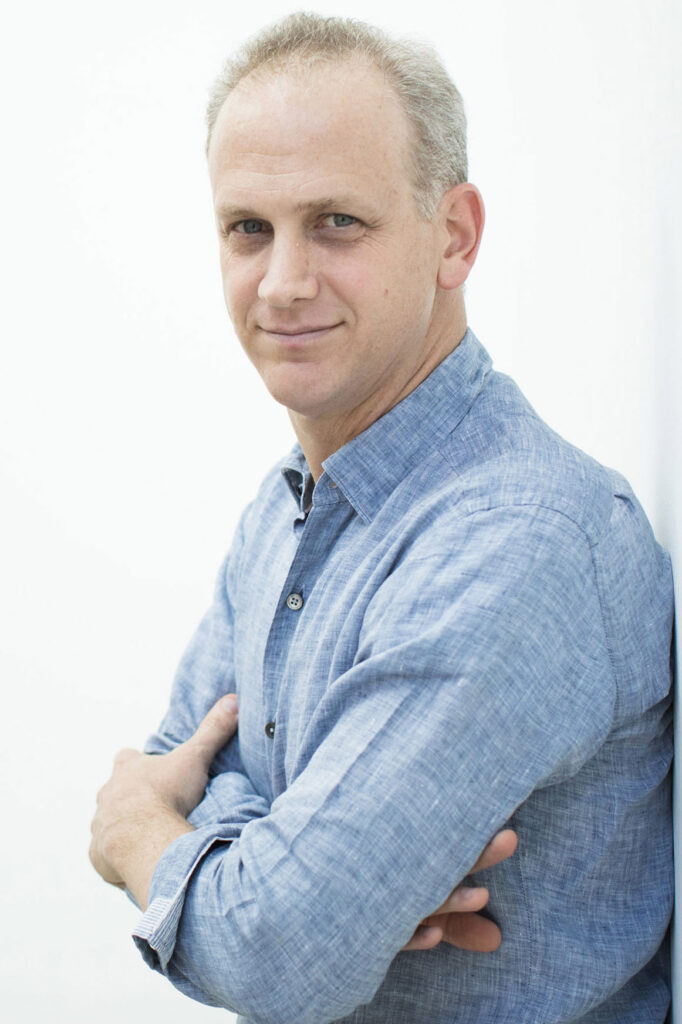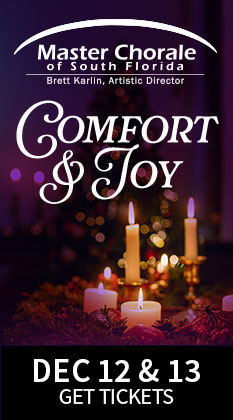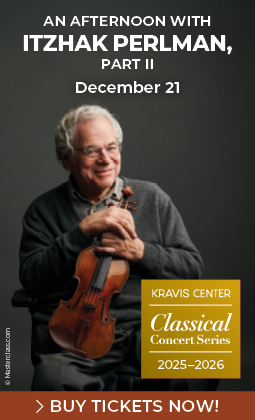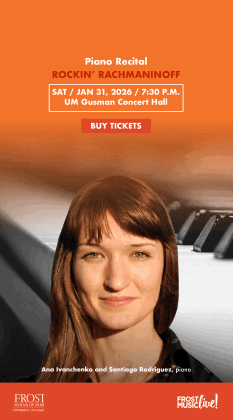Performances
Hindoyan makes impressive stand with New World Symphony
Conductor Domingo Hindoyan led the New World Symphony in a program […]
FGO’s “Silent Night” is a rich and moving tale of common humanity
This has been a virtual American opera week in Miami. Following […]
Frost Symphony deftly balances music of darkness and light
The Frost Symphony Orchestra continued its season Saturday night with a […]
Articles
No slowing down for Gerard Schwarz, South Florida’s busiest conductor
When Gerard Schwarz was a teenage trumpet student, he dreamed of […]
Concert review
Gomyo’s sterling advocacy in Bernstein “Serenade” elevates New World’s lightweight Spanish program

Karen Gomyo performed Bersntein’s Serenade (after Plato’s Symposium) with the New World Symphony Saturday night.
Violinist Karen Gomyo has been a soloist on the international concert scene for more than two decades. A student of renowned pedagogue Dorothy DeLay at the Juilliard School, she has never received the public attention and acclaim of many of her contemporaries. Publicity and artistry are not necessarily synonymous, however, and Gomyo is a musician to be reckoned with.
On Saturday night, she gave a terrific performance of Leonard Bernstein’s Serenade (after Plato’s Symposium) with the New World Symphony under Carlos Miguel Prieto.
Bernstein’s 1954 opus, a violin concerto in everything but name, has always seemed an overly ambitious, uneven score. So compelling and deeply probing was Gomyo’s account at the New World Center that it made one reevaluate the work. Perhaps all Bernstein’s creation needs is a performance that put depth of expressive content over flashy superficiality.
That is exactly what Gomyo delivered. From the violin’s first notes, her tone soared and she cut to the music’s lyrical heart. In the first movement’s second part, the dance-like pages were given deft fleetness and zest. The “Aristophanes” second movement was shaped in a graceful, almost courtly manner with finely honed sound. The “Eryximachus” scherzo emerged in a rapid-fire fashion with spot-on accuracy.
Gomyo’s soft, caressing tonal hues drew out the long melodic lines of “Agathon,” the score’s high point. The violin-harp duet struck just the right aural mix and the accompanying string patterns registered in silken waves.
Following a skillfully conveyed violin with cello recitative, Gomyo captured the jazzy spirit of the finale, with lithe, bluesy slides worthy of Stephane Grappelli. Under Gomyo’s fingers, Bernstein’s 30-minute piece seemed to fly by Prieto offered strong support every step of the way. Despite the scoring for strings, harp, and percussion, he drew a sonority from the ensemble that seemed much larger.
A standing, cheering ovation and repeated solo curtain calls greeted Gomyo’s remarkable performance. For an encore, she offered an idiomatic, virtuosic take on Astor Piazzolla’s Tango Etude No. 3, astutely mixing bravura and languor in equal measure. Gomyo should return to New World and continue to explore the less frequently heard 20th century concerto repertoire.
The Bernstein work was preceded by Alberto Ginastera’s Variaciones concertantes. Perhaps the Argentine composer’s second most played piece (next to the suite from his ballet Estancia), the work is a set of variations on an original theme that spotlight individual instruments and sections. The initial cello melody is moody and ruminative but many of the variations resound in robust and vigorous patterns. Ginastera’s full-throttle finale is a malambo, returning to the dance of the gauchos on the pampas from his ballet scores.
The piece is cleverly conceived and highly entertaining. This music is in Prieto’s DNA and he led a sizzling reading, replete with nuanced attention to detail and dynamics. Double bass player John Shand managed to draw a striking melodic line from the usually heavy instrument. There were outstanding solo contributions from concertmaster Diego Diaz, violist Rituparna Sivakumar, cellist Mizuki Hayakawa and harpist Eloise Fares.
The concert’s second half turned to pops repertoire. Santa Cruz de Pacairigua by Evencio Castellanos (1915-1984) is a tribute to Venezuela’s African descendant population with toe-tapping dance tunes and opulent orchestration. The five horns, three trumpets, trombones and tuba made a fine racket. Following that performance, two New World players emerged from the orchestra to play duos. Violinist Pablo Fernandez and Ricardo Bravo on quattro guitar offered “La Vaca Mariposa” by Simon Diaz and “El Diablo Suelto” by Heraclio Fernandez, played with dazzling vitality.
Composer Juan Pablo Contreras was on hand for the performance of his Mariachitian, a tribute to the Mexican state of Jalisco where Contreras was born. This piece could become a pops standard. Well-crafted themes, nicely varied instrumentation including mariachi instruments calling for six percussionists and an 11-minute span make for a winning composition.
Prieto and the large contingent played it with vigorous enthusiasm. The conductor added the Intermezzo from the zarzuela La Boda de Luis Alonso by Geronimo Giménez, lively Spanish music led with verve and a touch of showmanship by Prieto.
While all of this was pleasant and enjoyable, the evening belonged to Karen Gomyo and her revitalized vision of Bernstein’s solo violin work.
The New World Symphony repeats the program 2 p.m. Sunday at the New World Center in Miami Beach. nws.edu
Posted in Performances
No Comments
Coming Up
December 3
Handel & Haydn Society
Jonathan Cohen, conductor
Handel: Messiah […]
News
Patrick Quigley to depart Seraphic Fire in 2026; James Bass will be his successor
The Seraphic Fire torch is being passed.
Patrick Dupre Quigley, founder […]
